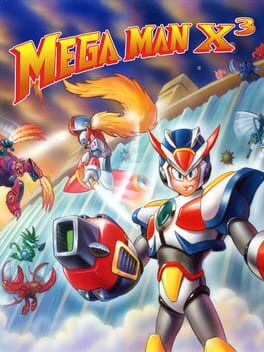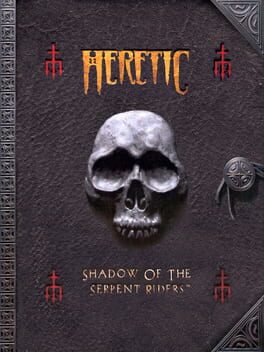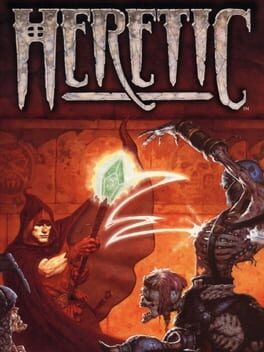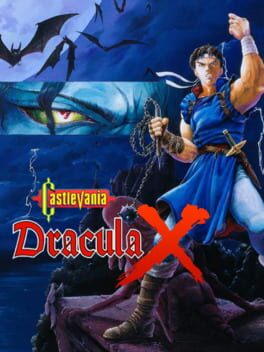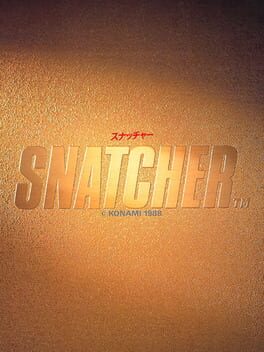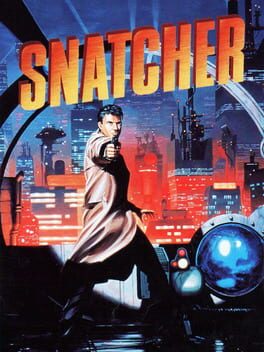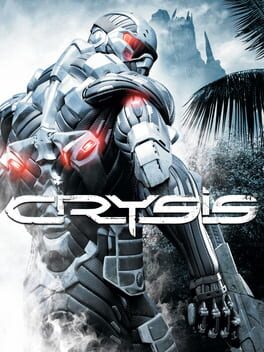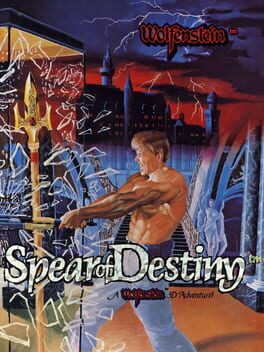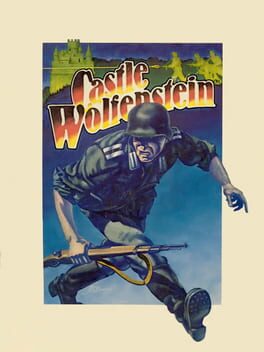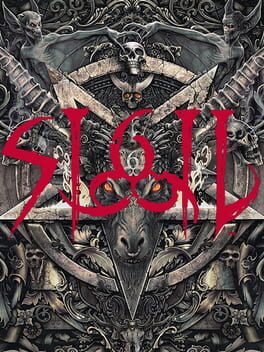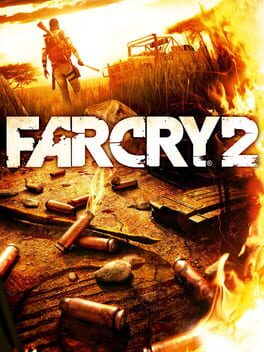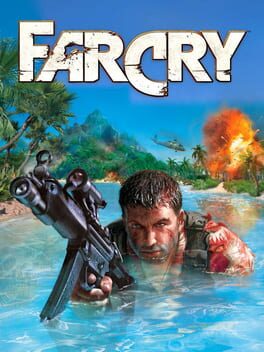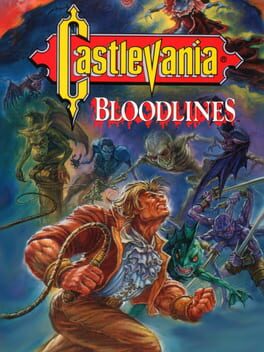Z02X
1995
### Mega Man X3 Review
Mega Man X3 offers a solid experience, although it doesn't quite reach the heights of its predecessors in the Mega Man X series. The game maintains the franchise's core formula but introduces new elements that are both a strength and a weakness.
I liked the game but found it to be the least impressive of the Mega Man X games. It's enjoyable but doesn't stand out as much as the earlier titles. The balance is generally fine, providing the typical Mega Man challenge. The pacing is dependent on the player's initial order of stages, which has always been a hallmark of the series. This time, it's a bit harder to get it right, adding a layer of difficulty.
The controls are solid and consistent with previous Mega Man X games, which is a positive aspect. The game hides extras in a way that makes the order in which you play matter more than before. This can be frustrating and not particularly enjoyable. The art remains one of the best features of Mega Man X games, with X3 being no exception. The visuals are impressive for an SNES title. There's nothing groundbreaking in terms of technology; it follows the same formula as its predecessors without significant innovation. The game is enjoyable, maintaining the fun factor typical of the series.
The music is good but doesn't stand out as much as in previous entries. It's solid but not exceptional. The sound design is adequate but not particularly noteworthy. The game is straightforward and clear, which is a strong point. Players rarely find themselves confused about what to do next. While it sticks to the same formula, the introduction of controlling Zero shows potential. Unfortunately, players are penalized for using him, which dampens the innovation.
The game hints at future developments, but doesn't build on them effectively. Backtracking and undoing progress to get items can be annoying. Completing the game was the least exciting experience among the three Mega Man X games. Despite a difficult ending, it didn't feel rewarding. By the end, I wanted more Mega Man X but not necessarily more of X3. The game didn't leave a strong desire for more content.
The game has some replayability, but it's not enough to compel frequent replays. Older titles in the series are more enticing for a replay. Running away from the virus was particularly frustrating. With only a few hits left, it felt impossible to avoid damage. This part of the game felt unfair and detracted from the overall experience.
As much as I liked Mega Man X3, objectively, it is not impressive all things considered. It maintains the core elements that fans love but fails to innovate or provide a consistently balanced and rewarding experience. While it's a solid entry, it's not the best representation of what the Mega Man X series can offer.
Mega Man X3 offers a solid experience, although it doesn't quite reach the heights of its predecessors in the Mega Man X series. The game maintains the franchise's core formula but introduces new elements that are both a strength and a weakness.
I liked the game but found it to be the least impressive of the Mega Man X games. It's enjoyable but doesn't stand out as much as the earlier titles. The balance is generally fine, providing the typical Mega Man challenge. The pacing is dependent on the player's initial order of stages, which has always been a hallmark of the series. This time, it's a bit harder to get it right, adding a layer of difficulty.
The controls are solid and consistent with previous Mega Man X games, which is a positive aspect. The game hides extras in a way that makes the order in which you play matter more than before. This can be frustrating and not particularly enjoyable. The art remains one of the best features of Mega Man X games, with X3 being no exception. The visuals are impressive for an SNES title. There's nothing groundbreaking in terms of technology; it follows the same formula as its predecessors without significant innovation. The game is enjoyable, maintaining the fun factor typical of the series.
The music is good but doesn't stand out as much as in previous entries. It's solid but not exceptional. The sound design is adequate but not particularly noteworthy. The game is straightforward and clear, which is a strong point. Players rarely find themselves confused about what to do next. While it sticks to the same formula, the introduction of controlling Zero shows potential. Unfortunately, players are penalized for using him, which dampens the innovation.
The game hints at future developments, but doesn't build on them effectively. Backtracking and undoing progress to get items can be annoying. Completing the game was the least exciting experience among the three Mega Man X games. Despite a difficult ending, it didn't feel rewarding. By the end, I wanted more Mega Man X but not necessarily more of X3. The game didn't leave a strong desire for more content.
The game has some replayability, but it's not enough to compel frequent replays. Older titles in the series are more enticing for a replay. Running away from the virus was particularly frustrating. With only a few hits left, it felt impossible to avoid damage. This part of the game felt unfair and detracted from the overall experience.
As much as I liked Mega Man X3, objectively, it is not impressive all things considered. It maintains the core elements that fans love but fails to innovate or provide a consistently balanced and rewarding experience. While it's a solid entry, it's not the best representation of what the Mega Man X series can offer.
1994
Castlevania: Dracula X provides an experience that leaves players wondering about its purpose within the franchise, especially given its status as a supposed remake of the superior Rondo of Blood. While the game is generally enjoyable, it doesn't quite reach the heights of its predecessors, Super Castlevania and Rondo of Blood.
The gameplay balance starts off fine but falters significantly in certain areas, particularly in Level 6 and during Dracula's first phase. These sections are notably more difficult than the rest of the game, creating an uneven experience. The pacing also suffers due to these balance issues, although it is mostly manageable throughout the rest of the game.
The controls are decent but don't match the fluidity seen in Super Castlevania. They are functional, yet there's a sense that they could be improved. The game also becomes tedious during Dracula's first phase, taking around 30 minutes to get through both times I played.
Visually, the game feels like a downgrade compared to its predecessors. The art style doesn't live up to the standards set by Super Castlevania and Rondo of Blood. Technologically, the game is unimpressive, failing to fully utilize the capabilities of the SNES and feeling like an overall downgrade in terms of technology.
Despite these drawbacks, Castlevania: Dracula X remains a fun game. The music is solid, although not among the best in the series, and the sound design is adequate. The game is straightforward in its clarity, making it easy to understand your goals and progress.
Innovation is where the game falters the most. It lacks any significant new ideas or features, making one question its necessity within the series. In terms of series progression, it doesn't take a full step back like the Genesis game, but it doesn't impress either.
Repetitiveness is relatively low, with only a little replay value needed to experience alternate stages and bosses. However, satisfaction is diminished by the tedious Dracula fight, which wastes time for little reward. My initial neutral rating was lowered because of this frustration.
The desire for more content is mixed. While I didn't hate replaying the game, it didn't leave me wanting more either. The replayability is present but not extensive, which might be for the best.
Overall, Castlevania: Dracula X is a less memorable entry in the series. It provides a fair and straightforward experience but fails to stand out.
The gameplay balance starts off fine but falters significantly in certain areas, particularly in Level 6 and during Dracula's first phase. These sections are notably more difficult than the rest of the game, creating an uneven experience. The pacing also suffers due to these balance issues, although it is mostly manageable throughout the rest of the game.
The controls are decent but don't match the fluidity seen in Super Castlevania. They are functional, yet there's a sense that they could be improved. The game also becomes tedious during Dracula's first phase, taking around 30 minutes to get through both times I played.
Visually, the game feels like a downgrade compared to its predecessors. The art style doesn't live up to the standards set by Super Castlevania and Rondo of Blood. Technologically, the game is unimpressive, failing to fully utilize the capabilities of the SNES and feeling like an overall downgrade in terms of technology.
Despite these drawbacks, Castlevania: Dracula X remains a fun game. The music is solid, although not among the best in the series, and the sound design is adequate. The game is straightforward in its clarity, making it easy to understand your goals and progress.
Innovation is where the game falters the most. It lacks any significant new ideas or features, making one question its necessity within the series. In terms of series progression, it doesn't take a full step back like the Genesis game, but it doesn't impress either.
Repetitiveness is relatively low, with only a little replay value needed to experience alternate stages and bosses. However, satisfaction is diminished by the tedious Dracula fight, which wastes time for little reward. My initial neutral rating was lowered because of this frustration.
The desire for more content is mixed. While I didn't hate replaying the game, it didn't leave me wanting more either. The replayability is present but not extensive, which might be for the best.
Overall, Castlevania: Dracula X is a less memorable entry in the series. It provides a fair and straightforward experience but fails to stand out.
Fire Emblem: Shadow Dragon offers a well-rounded and enjoyable strategy RPG experience. The game's strength lies in its balanced gameplay, where the difficulty remains manageable without becoming overly frustrating. Players can appreciate a steady progression that keeps them engaged while avoiding a sense of being rushed.
The pacing is well-maintained, with the game becoming more challenging at a comfortable rate. Although there are moments where it feels easier, these phases serve as much-needed breaks. The controls are solid and intuitive, even for players accustomed to PC strategy games, making the transition to console controls smooth and straightforward.
However, the game can become tedious, especially for those aiming to experience everything it has to offer. The necessity for grinding can make some chapters feel longer than they actually are, potentially leading to a sense of monotony. Despite this, most chapters can be completed quickly, allowing players to advance at a reasonable pace.
The art style is impressive, particularly for a DS game, contributing to the overall appeal. Technologically, the game doesn't break new ground but stands as a solid entry in the genre. The music is iconic, enhancing the atmosphere and making the experience more enriching. The sound design is also solid, complementing the gameplay effectively.
Clarity in the game is generally good, but understanding the deeper mechanics, stats, and consequences of decisions can be challenging. This can lead to a reliance on external resources for a complete experience. The innovation seen in the first Fire Emblem title is noteworthy, offering expansive and engaging content.
Fire Emblem sets up a powerful franchise. While the core gameplay loop is simple, the varied maps provide unique experiences, reducing repetitiveness. Completion of chapters lets a player experience the balanced and flexible gameplay, though they may not feel entirely satisfying upon chapter completion.
The desire for more content is strong, although not necessarily more of the same game. The game encourages replayability with its secrets and flavor text detailing post-endgame events. However, achieving everything in a single playthrough is not possible, making subsequent playthroughs potentially tedious.
Overall, Fire Emblem: Shadow Dragon is a commendable entry in the series, offering a fair and engaging experience.
The pacing is well-maintained, with the game becoming more challenging at a comfortable rate. Although there are moments where it feels easier, these phases serve as much-needed breaks. The controls are solid and intuitive, even for players accustomed to PC strategy games, making the transition to console controls smooth and straightforward.
However, the game can become tedious, especially for those aiming to experience everything it has to offer. The necessity for grinding can make some chapters feel longer than they actually are, potentially leading to a sense of monotony. Despite this, most chapters can be completed quickly, allowing players to advance at a reasonable pace.
The art style is impressive, particularly for a DS game, contributing to the overall appeal. Technologically, the game doesn't break new ground but stands as a solid entry in the genre. The music is iconic, enhancing the atmosphere and making the experience more enriching. The sound design is also solid, complementing the gameplay effectively.
Clarity in the game is generally good, but understanding the deeper mechanics, stats, and consequences of decisions can be challenging. This can lead to a reliance on external resources for a complete experience. The innovation seen in the first Fire Emblem title is noteworthy, offering expansive and engaging content.
Fire Emblem sets up a powerful franchise. While the core gameplay loop is simple, the varied maps provide unique experiences, reducing repetitiveness. Completion of chapters lets a player experience the balanced and flexible gameplay, though they may not feel entirely satisfying upon chapter completion.
The desire for more content is strong, although not necessarily more of the same game. The game encourages replayability with its secrets and flavor text detailing post-endgame events. However, achieving everything in a single playthrough is not possible, making subsequent playthroughs potentially tedious.
Overall, Fire Emblem: Shadow Dragon is a commendable entry in the series, offering a fair and engaging experience.
1988
1992
Act 1 Review:
Act 1 is a standout experience, receiving top marks across several aspects. The balance of puzzles is just right, offering a challenge without being overly difficult. The pacing, both in gameplay and story, is well-executed, keeping the player engaged. While the shooting controls may feel strange at first, they eventually become enjoyable.
The art is particularly impressive, considering the limitations of the hardware. Technologically, Snatcher pushes the limits of its type of game, highlighting innovation that sets it apart. Despite some minor tedium with backtracking, the overall experience is very enjoyable.
The music and sound design are top-notch, with clear and non-intrusive sound that complements the game well. Clarity in gameplay is mostly good, though the "look" vs. "investigate" system can be a bit confusing at times.
Act 1's innovation extends beyond just gaming, making it a unique experience. While there are some repeated actions, they do not detract significantly from the overall experience. The game has a special quality evident from the start, keeping players engaged throughout, making it a very satisfying experience. Fairness in gameplay is also notable, with the game feeling reasonable in its challenges. Overall, Act 1 stands out as exceptional.
Act 2 Review:
While still highly enjoyable, some weaknesses become more apparent in Act 2. The balance of puzzles fluctuates, ranging from extremely simple to overly repetitive, making progression occasionally frustrating. The story pacing, however, is perfect for a second act, building up more like a real story rather than an intro.
By now, the shooting controls feel intuitive, and the flashlight room is a standout, feeling particularly immersive. However, when my wife played and asked for help with a shooting section, it took me a bit to get used to the controls again, highlighting how tricky they can be after a break. It felt unbalanced that I was only able to get past that point with a perfect score because of how easy it was to get overwhelmed when only one hit you.
Some parts get very tedious due to repeating steps, especially because of the persistent "look" vs. "investigate" issue. This can waste time, though the turbo cycle scene manages to be an exception. The art remains impressive, though not perfect, thus rated slightly lower than in Act 1. Technologically, Snatcher continues to push boundaries for its genre. The fun factor is still high, and the music remains excellent. The sound design continues to be solid.
The game's innovation continues to shine, with unique elements like the flashlight scene showcasing its potential. However, repetitiveness becomes more pronounced, limiting the game's appeal to some players. My wife and I both noticed this, feeling it stemmed more from a lack of knowledge in game design rather than technological limitations. The flashlight scene, in particular, highlights the game's potential, and more focus on mechanics like that would have been beneficial.
The good puzzles in Act 2 are definitely more satisfying than in Act 1. A significant character death near the end effectively hooks the player, increasing the desire to continue. This chapter feels more linear, limiting exploration and replayability somewhat. At this point, the fun post-Cold War fan fiction becomes quite exciting. Overall, Act 2 of Snatcher remains engaging, though with more pronounced flaws than Act 1.
Act 3 Review:
Act 3 has its own set of strengths and weaknesses. My subjective impressions of the game remain positive. The balance in this act is not great, with limited gameplay that is more difficult than it should be. The pacing, however, is fine, considering the act's short length.
What really breaks down is the balance. Once I realized I should spam shoot, it was fine, but the game in the earlier acts encouraged me to aim well, which felt misleading.
The art for the villain is excellent. However, the flashback shots with a red filter looked off to me, even though I know it was the intent. The end of the adventure was quite enjoyable. The music is good, particularly the credit song, though some main dialogue parts without music could have had the mood enhanced by it. The sound design remains solid.
Clarity in this act is good, with little gameplay but never confusing. The act primarily exists to wrap up the main plot, showing less innovation. It does set up for more in the series even though it ends here. Despite its limitations, Act 3 doesn't fail to keep what makes Snatcher special.
Final Thoughts:
Each act provides a unique experience, with strengths and weaknesses that contribute to the overall enjoyment of the game. Act 1 stands out as exceptional, Act 2 remains engaging despite some flaws, and Act 3 wraps up the story effectively while highlighting some gameplay issues. Overall, Snatcher is a special game that keeps players engaged and satisfied throughout its narrative.
Act 1 is a standout experience, receiving top marks across several aspects. The balance of puzzles is just right, offering a challenge without being overly difficult. The pacing, both in gameplay and story, is well-executed, keeping the player engaged. While the shooting controls may feel strange at first, they eventually become enjoyable.
The art is particularly impressive, considering the limitations of the hardware. Technologically, Snatcher pushes the limits of its type of game, highlighting innovation that sets it apart. Despite some minor tedium with backtracking, the overall experience is very enjoyable.
The music and sound design are top-notch, with clear and non-intrusive sound that complements the game well. Clarity in gameplay is mostly good, though the "look" vs. "investigate" system can be a bit confusing at times.
Act 1's innovation extends beyond just gaming, making it a unique experience. While there are some repeated actions, they do not detract significantly from the overall experience. The game has a special quality evident from the start, keeping players engaged throughout, making it a very satisfying experience. Fairness in gameplay is also notable, with the game feeling reasonable in its challenges. Overall, Act 1 stands out as exceptional.
Act 2 Review:
While still highly enjoyable, some weaknesses become more apparent in Act 2. The balance of puzzles fluctuates, ranging from extremely simple to overly repetitive, making progression occasionally frustrating. The story pacing, however, is perfect for a second act, building up more like a real story rather than an intro.
By now, the shooting controls feel intuitive, and the flashlight room is a standout, feeling particularly immersive. However, when my wife played and asked for help with a shooting section, it took me a bit to get used to the controls again, highlighting how tricky they can be after a break. It felt unbalanced that I was only able to get past that point with a perfect score because of how easy it was to get overwhelmed when only one hit you.
Some parts get very tedious due to repeating steps, especially because of the persistent "look" vs. "investigate" issue. This can waste time, though the turbo cycle scene manages to be an exception. The art remains impressive, though not perfect, thus rated slightly lower than in Act 1. Technologically, Snatcher continues to push boundaries for its genre. The fun factor is still high, and the music remains excellent. The sound design continues to be solid.
The game's innovation continues to shine, with unique elements like the flashlight scene showcasing its potential. However, repetitiveness becomes more pronounced, limiting the game's appeal to some players. My wife and I both noticed this, feeling it stemmed more from a lack of knowledge in game design rather than technological limitations. The flashlight scene, in particular, highlights the game's potential, and more focus on mechanics like that would have been beneficial.
The good puzzles in Act 2 are definitely more satisfying than in Act 1. A significant character death near the end effectively hooks the player, increasing the desire to continue. This chapter feels more linear, limiting exploration and replayability somewhat. At this point, the fun post-Cold War fan fiction becomes quite exciting. Overall, Act 2 of Snatcher remains engaging, though with more pronounced flaws than Act 1.
Act 3 Review:
Act 3 has its own set of strengths and weaknesses. My subjective impressions of the game remain positive. The balance in this act is not great, with limited gameplay that is more difficult than it should be. The pacing, however, is fine, considering the act's short length.
What really breaks down is the balance. Once I realized I should spam shoot, it was fine, but the game in the earlier acts encouraged me to aim well, which felt misleading.
The art for the villain is excellent. However, the flashback shots with a red filter looked off to me, even though I know it was the intent. The end of the adventure was quite enjoyable. The music is good, particularly the credit song, though some main dialogue parts without music could have had the mood enhanced by it. The sound design remains solid.
Clarity in this act is good, with little gameplay but never confusing. The act primarily exists to wrap up the main plot, showing less innovation. It does set up for more in the series even though it ends here. Despite its limitations, Act 3 doesn't fail to keep what makes Snatcher special.
Final Thoughts:
Each act provides a unique experience, with strengths and weaknesses that contribute to the overall enjoyment of the game. Act 1 stands out as exceptional, Act 2 remains engaging despite some flaws, and Act 3 wraps up the story effectively while highlighting some gameplay issues. Overall, Snatcher is a special game that keeps players engaged and satisfied throughout its narrative.
2007
I decided one day on spring break to play games for 24h straight, midnight to midnight. I started with Crysis, I had no idea the game took place over a day beforehand. The helicopter section, that I actually enjoyed kept crashing on my dell vostro hand me down, so it took me 24h to finish. Was a special experience.
1992
1981
2019
2008
2004
Castlevania: Bloodlines is a decent game, playable and enjoyable, but it doesn't quite stand out. The balance feels standard, and the difficulty progresses steadily without becoming too extreme. The controls are okay, but the whip and staff jump mechanics feel underutilized compared to previous games in the series. The first half of the first levels can be a bit boring and repetitive. The art is mostly fine, but the second stage's first half feels bland compared to the rest of the game.
Technologically, the game suffers on the Sega Genesis, showcasing the hardware's limitations compared to other platforms. It doesn't bring much new to the table, lacking innovations seen in previous titles. Despite these drawbacks, the game is still somewhat fun to play, with music being a standout feature. However, the game feels like a step back for the series, lacking certain features and improvements. The boss reuse adds some repetitiveness, but it's not overly frustrating. Overall, Castlevania: Bloodlines may not be the best in the series, but it leaves players feeling somewhat satisfied, with some desire for more. replayability is decent, especially with the other character. While it has its moments, it lacks a special factor that would make it truly memorable.
Technologically, the game suffers on the Sega Genesis, showcasing the hardware's limitations compared to other platforms. It doesn't bring much new to the table, lacking innovations seen in previous titles. Despite these drawbacks, the game is still somewhat fun to play, with music being a standout feature. However, the game feels like a step back for the series, lacking certain features and improvements. The boss reuse adds some repetitiveness, but it's not overly frustrating. Overall, Castlevania: Bloodlines may not be the best in the series, but it leaves players feeling somewhat satisfied, with some desire for more. replayability is decent, especially with the other character. While it has its moments, it lacks a special factor that would make it truly memorable.
Truly a great game. Fun, smooth innovative and has that special sausce that makes a great game. It never feels to tedious and I found myself replaying levels to 100% without any sense of time wasted. Music is great but not the best the series has to offer. The remixes are better than Super Castlevania IV. I got a little confused first when I didn't realize that in the main menu you could go back to levels to try different paths and I was woried of a repeat of Castlevania 3 and having to replay the whole game to get the full experience.
What I really liked:
The multiple endings and cut scenes were really nice.
What I wish was different:
A way to go to change levels and characters mid game without a system restart.
What I didn't like:
I didn't like the movement controls going backwards. No whip tricks, crawling.
I felt the backflip was cool but Maria proved they could have had a cool movement set for both characters.
Next review I am going to try a new format.
What I really liked:
The multiple endings and cut scenes were really nice.
What I wish was different:
A way to go to change levels and characters mid game without a system restart.
What I didn't like:
I didn't like the movement controls going backwards. No whip tricks, crawling.
I felt the backflip was cool but Maria proved they could have had a cool movement set for both characters.
Next review I am going to try a new format.
